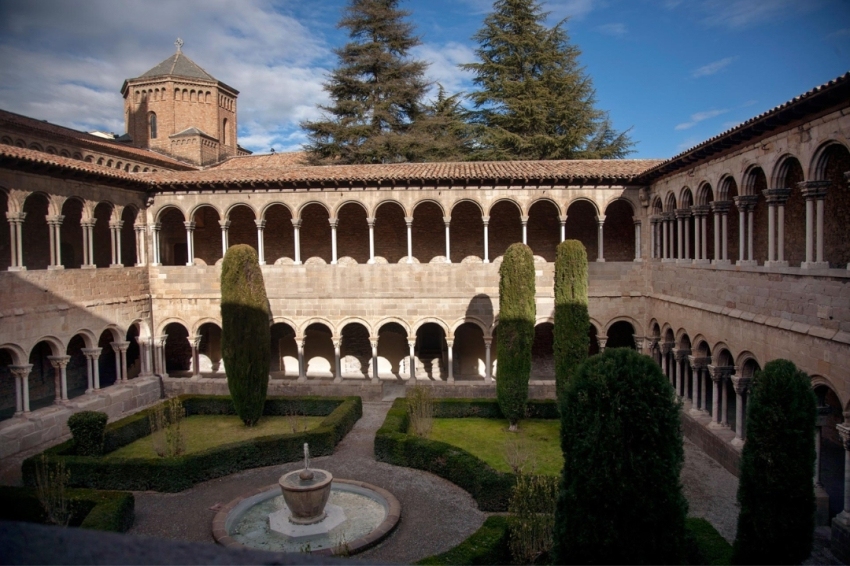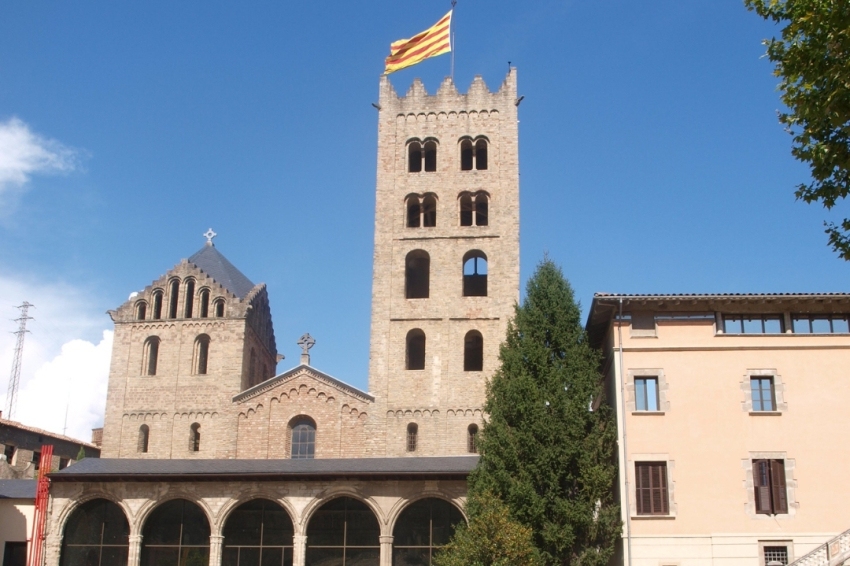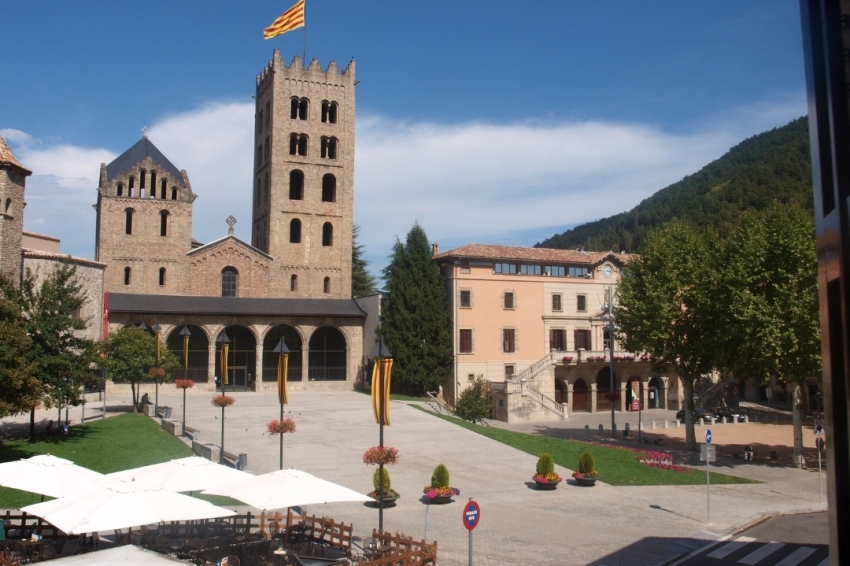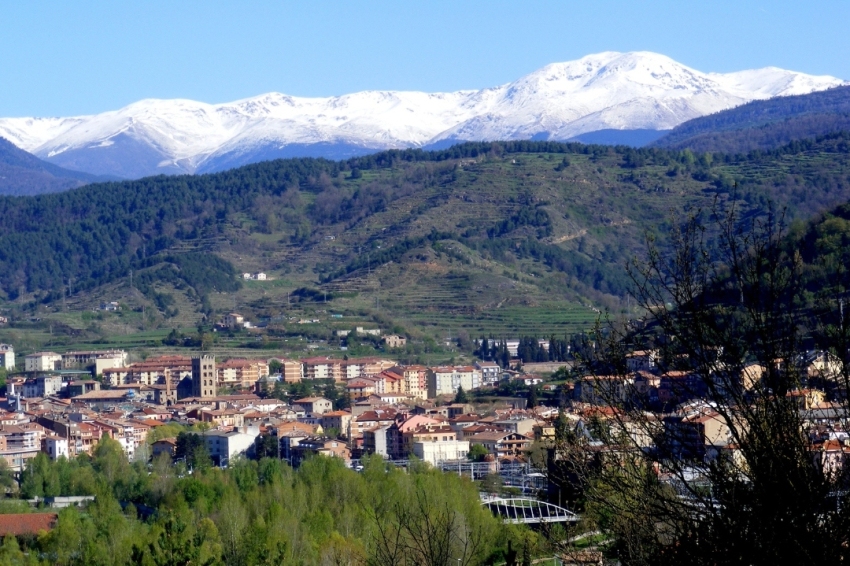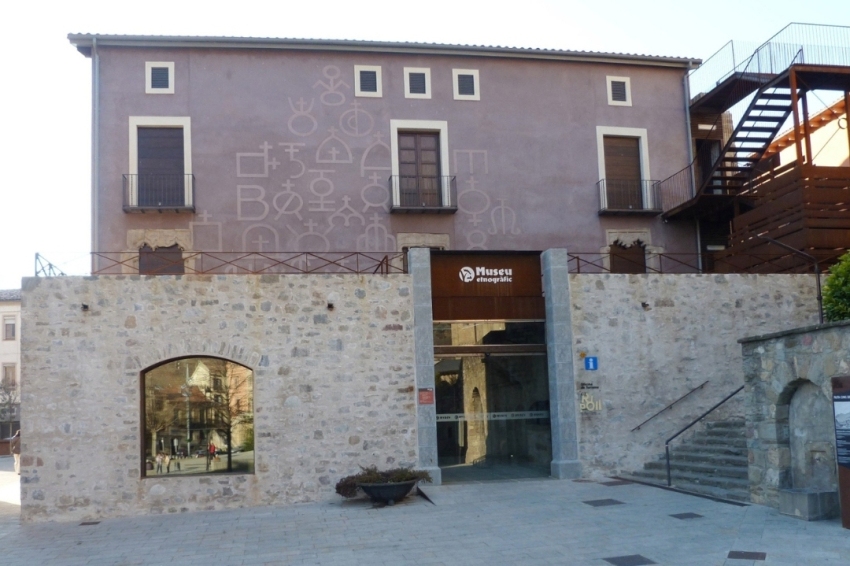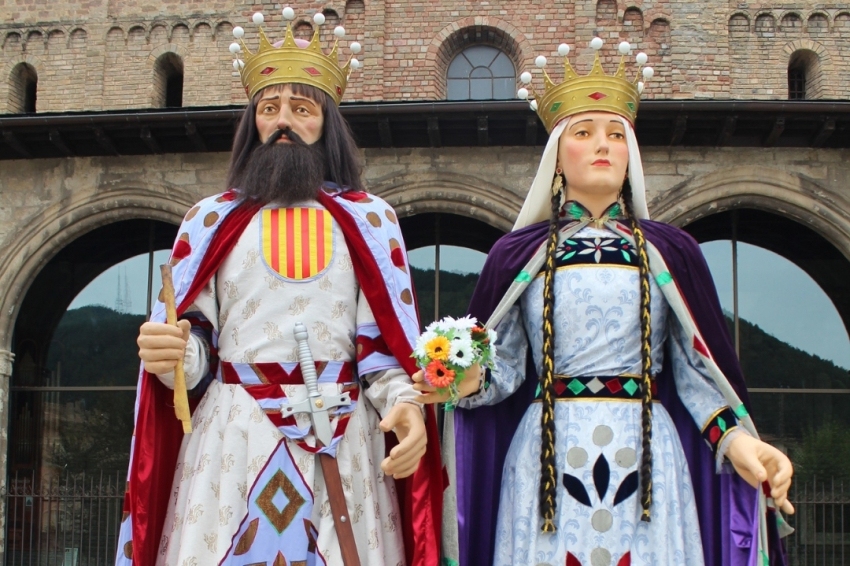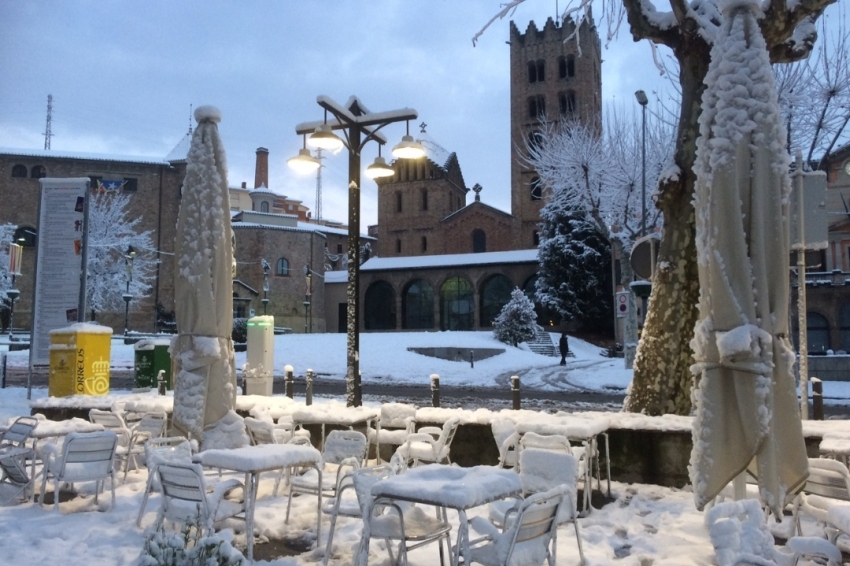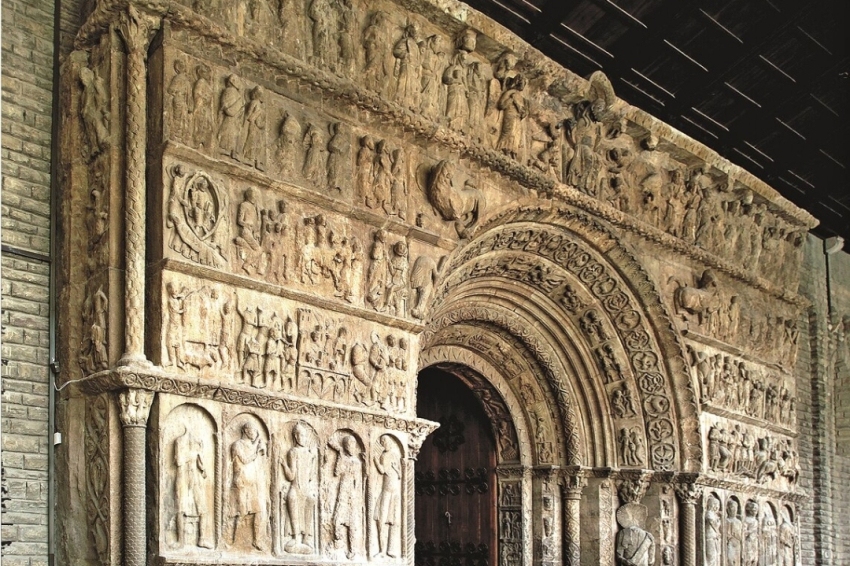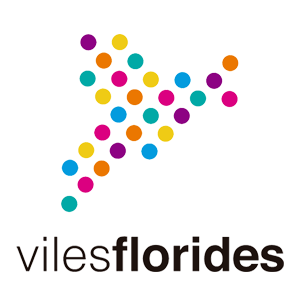Ripoll
Ripoll is the capital of the Ripollès region. It is located in the middle of the heart of the Pre-Pyrenees, in a strategic point as a crossroads. The Freser and Ter rivers run through its terminus, giving the valley a peculiar shape.
The origins of Ripoll can be found in prehistoric times, but what gives shape to the town that it is now is Count Guifré el Pilós, who in the year 879 founded the Romanesque monastery of Santa Maria under the Benedictine order. As the years went by, the monastery gained strength and importance, a fact shown by Abbot Oliba being represented as responsible for the monastery. This importance was also reflected in other aspects: political, economic and legal throughout the Catalan territory.
This caused the inhabitants of Ripoll to settle near the monastery, to achieve security and future prosperity. But in the 15th century, this security was cut short by the damage caused by an earthquake. With this, the citizens reacted and the reconstruction of the monastery took place with the application of Gothic. Even so, the population continues to develop and gains strength since the War of the Reapers with the manufacture of weapons. Despite this, there are diversified sectors in the population industry: textile, chocolate, flour, etc.
Thus, today, Ripoll shows us the results of its history through its vestiges, among which we highlight, as we have mentioned, the Monastery of Santa Maria de Ripoll where we find a double-story cloister in which still There are capitals from the 12th century.
We also find the renovated Ethnographic Museum of Ripoll, which has been showing, collecting, documenting and studying the life, customs and industries of the region for almost a hundred years, the Scriptorium, a space to learn about the production of manuscripts from the 10th to the 10th centuries. XII. Likewise, La Farga Palau is an essential place to learn about the industrial era of the area.
In addition, Ripoll offers us a route through different buildings in its city, in which we can see the church of Sant Pere, fragments of the old wall and a retinue of houses, of which we highlight the Casa Muntades, the Casa Bonada, the Casa Codina and the Casal dels Taurinyà.
In addition, Ripoll also stands out for its natural environment and that is why we recommend taking a walk along Paseo de Martí Ragull and Paseo dels Aurons. But we cannot forget the banks of the rivers with their levers and bridges, which will help you understand the importance they have had for Ripoll.
PLACES OF INTEREST
- Monastery of Santa Maria: visiting Santa Maria de Ripoll is getting closer to one of the most beautiful and evocative buildings in Catalonia. The portal, the basilica and the cloister make a unique ensemble, a delight for art lovers.
- Ripoll Ethnographic Museum: in 1929 the Ripoll Folklore Museum Archive was founded, which was installed in the attic of the old church of Sant Pere and was the first in Catalonia dedicated to ethnography. Over seventy years and without interruption, he collected, preserved, studied and disseminated the heritage of places. The result is the Ethnographic Museum of Ripoll, of which the collections related to shepherds, the peasantry, trades, popular religiosity, Catalan ironworks and wrought iron and portable firearms from Ripoll stand out.
- Scriptorium: the Scriptorium of Ripoll is a permanent exhibition, which in an interactive and didactic way, offers the possibility of learning about the cultural past of the population and the importance that the Monastery of Santa María de Ripoll had throughout the 10th centuries. XII, in the production and copying of manuscripts, which became the most important in Europe.
- Farga Palau: an authentic forge workshop that closed its doors permanently in 1978. You will be able to observe two hammers, the horns (which characterize the Catalan forge), the water wheel... and learn about the process by which the ore is converted into iron suitable for later work.
What to do
Museu Etnogràfic de Ripoll
RipollThe first museum in Catalonia dedicated to ethnography. Through the Ethnographic Museum…
Ratafia Bosch
Sant Quirze de Besora (a 11.4 Km)Come visit Ratafia Bosch and live the experience of discovering its history…
Where to eat
La Santa Restaurant
Ribes de Freser (a 10.3 Km)Our fires cook locally sourced food, harvested using traditional methods. We support…
Restaurant Dachs
Les Llosses (a 8.4 Km)Restaurant Dachs offers versatile spaces for celebrations in Les Llosses, with rustic…
Hostal la Muntanya
Castellar de n'Hug (a 17.1 Km)Family hostel located in Castellar de n'Hug. It offers various accommodation options,…
El Recó de l'Avi
Guardiola de Berguedà (a 26.2 Km)Typical homemade cuisine, with oak-grilled meats, a wide variety of tapas and…
Where to sleep
El Serradal
Sant Joan de les Abadesses (a 4.8 Km)Relax in a natural setting of meadows and forests, enjoying walks, hikes,…
Casa de colònies Les Codines, Fundesplai
Montesquiu (a 8.9 Km)Les Codines is located in the municipality of Montesquiu, in the Osona…
Angelats Hotel
Ribes de Freser (a 10.3 Km)Surrounded by an ancient forest, with wide paths to explore, the 20…
Càmping Vall de Ribes
Ribes de Freser (a 12.4 Km)Enjoy Camping Vall de Ribes, where you can immerse yourself in the…

